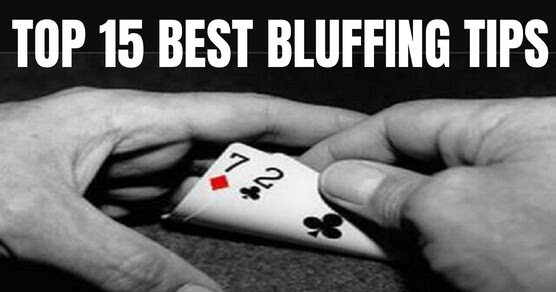Poker Bluff Tips
Another one of my favorite poker bluffing tips is to raise the flop when they bet. And the key here is to do it with hands that have some equity such as 9 ♥ 8 ♥ on: T ♥ 6 ♠ 2 ♦ This is a perfect spot to go for a bluff raise because we have a gutshot straight draw to the nuts and a backdoor flush draw as well. Bluffing Online Poker Poker Poker Tips Successful Bluff Texas Hold'em Texas Holdem Poker It is just about impossible to overstate the important of the right bluff in poker games. In very basic terms, a bluff happens when you put up a false move (and a false face) on what you have in your hand. Continuing a 10-part series of 'hold'em tips' for new players, we discuss 'bluff catching' & what criteria need to be present in order to call down bluffs.
One hand a player should never consider betting pre-flop at the beginning stages of a poker tournament is J♦️3♣️. It is estimated to lose more than 50% of the time to any other hand without even knowing your opponents hole cards. When heads-up against an opponent, a poker player must rewire the ideology on what hands are playable. In a poker game, a good hand can only take you so far. Playing poker without bluffing is to only play half of the game. It might seem sensible to take a circumspect approach as a beginner, but this is not really how the game should be played.
One way we can simplify the concept is to think about certain bluff lines while completely ignoring the board texture and our hole-cards . In the vast majority of games it is possible to identify good bluffing situations vs the average opponent even if all cards are dealt face-down. As such, we will not discuss any hole-cards or board textures in this two part series, we will simply consider lines.
. In the vast majority of games it is possible to identify good bluffing situations vs the average opponent even if all cards are dealt face-down. As such, we will not discuss any hole-cards or board textures in this two part series, we will simply consider lines.Common Bluff Spot 1: Bet-vs-Missed-Cbet-IP
If he's taking a balanced approach where he defends his checking range with check/calls and check/raises we'd then proceed by only betting hands with good playability on later streets and checking back a chunk of our air-range with the intention of giving up.

These stats are generally under-utilised but can be brutally effective. It's likely that vs the majority of opponents we will show a clear profit by 3barreling every time they x/c the flop as the preflop-raiser.
Common Bluff Spot 2: Bet-vs-Missed-Cbet-IP-Turn+River
Poker Bluff Tips Game
Poker Bluff Strategy
Assuming we have our opponents' fold-to-river-probe stat on our HUD, it's often surprising how high this number can be, especially if we are routinely overbetting. As such our river probe bet should often be above 70%.
Common Bluff Spot 3: Delayed Cbetting


Identifying Capped Ranges
- Air hands such as busted draws. After all it's the only way for these hands to win the pot, not to mention we showed weakness with our flop check.
- Value-hands. We checked back the turn so our opponent will likely not assume that a river bet from us is likely. If he wants to extract value he needs to bet himself.
- Have a bunch of air in them but also some mid-strength showdown
- Have purely mid-strength showdown and rarely any air